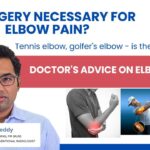Deep Vein Thrombosis and varicose veins are two common conditions that many people are confused about. Though both the conditions look similar, there is a difference between these conditions.
Varicose veins are common in females and they are abnormal, large and dilated veins that occur in feet or legs. They do not show any symptoms and sometimes patients may have pain and discomfort. On other hand, deep vein thrombosis (DVT) causes a deep vein to occlude and is commonly seen in the legs. DVT is a serious condition as blood clots block veins and can even travel to other parts and blocks blood flow to the lungs. It may show symptoms such as leg pain, and swelling. Occlusion is the main difference between both these conditions.
Treatment for Varicose Veins
The treatment for varicose veins does not include a long stay in hospital or does not need any recovery. Varicose veins do not require any surgical procedures and can be treated on an outpatient basis. The treatment for varicose veins includes:
- Proper care: You can treat varicose veins by lifestyle changes such as practising regular exercise, losing weight, stopping sitting or standing for longer durations. You should also stop wearing tight clothes, and should keep your legs elevated.
- Compression stockings: The use of compressions stockings is the first solution as they squeeze legs and makes blood flow to veins and legs. There are different types of compression stockings and you can get them from a medical store.
If self-care cannot reduce the pain and discomfort, the condition is considered as severe and other treatments such as the following may be used:
- Laser treatment: Laser treatment is used by doctors to close varicose veins by sending a beam of light to fade the vein.
- Catheter-assisted procedures: In this method, a small catheter is inserted into the varicose vein. The tip of the catheter will be heated using laser or radiofrequency. The heat collapses the vein and the catheter is pulled out. This method is suitable for treating larger varicose veins.
- Endoscopic vein surgery: If other techniques fail or if the condition is severe, this surgery is used. A video camera will be sent into the leg to view and close varicose veins. The varicose veins will be removed through small incisions.
Treatment for Deep Vein Thrombosis (DVT)
Deep Vein Thrombosis (DVT) should be treated as soon as it is identified as blood clots can damage other organs of the body. The treatment options for DVT include the following:
- Blood thinners: Blood thinners are effective at treating DVT and they can be used as pills or injections. They can stop your blood from clotting, but cannot break the already formed blood clots. Blood thinners prevent blood clots from becoming bigger and can further reduce the formation of new blood clots.
- Clot busters: If other medications do not work and if the DVT is serious, clot busters are used. It is also called as thrombolytics and is inserted into clot. Clot blusters cause excess bleeding and hence it is used only for treating serious blood clots.
- Filters: If you are not able to use medications to treat clots, filters such as vena cava will be inserted into a large vein. This can stop blood clots from moving to the lungs.
- Compression stockings: Compression stockings can help reduce your pain and swelling.
Though varicose veins and DVT can be treated, it is better to take prevention steps than looking for treatment after it occurs.
Meet Dr Pradyumna Reddy for DVT and Varicose Veins Treatment
Dr Pradyumna Reddy is an endovascular surgeon, interventional radiologist and varicose veins specialist in Hyderabad. She has treated several patients suffering from varicose veins and DVT with a 100% success rate. She has helped several patients to recover from serious conditions as well. If you or your loved one is suffering from vascular issues, meet Dr Pradyumna Reddy to receive the best possible treatment.






